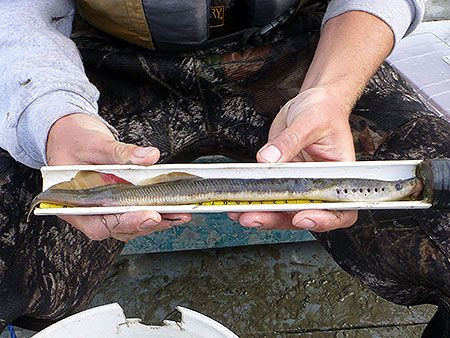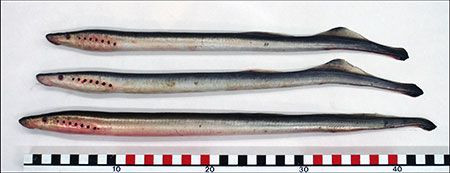Vampire-Like Fish Appearing On Alaskans’ Lawns. What Bizarre Animal Is Raining Down On Fairbanks?

They came in the dark of night -- or maybe in the light of day, it’s unclear -- and are terrifying some residents of Fairbanks, Alaska, a city of about 32,000 people situated 300 miles north of Anchorage. They measured about a foot in length, had mouths filled with row upon row of sharp teeth, and appeared seemingly out of nowhere on residents’ lawns and a store parking lot, according to CBS News. What could the bizarre creature be?
Animal experts identified them as Arctic lampreys, sometimes dubbed the “vampire fish” -- a parasitic species of jawless fish that inhabits coastal Arctic freshwater habitats. Lampreys are long and thin and feed by sucking the blood of other fish.

Lampreys are not eels, even though they look like them. In fact, they’re not even closely related -- lampreys are more akin to sharks than eels.
How do officials explain the mysterious disappearance of four lampreys on dry land over the past week? “The answer is probably gulls,” the Alaska Department of Fish and Game said last week in a statement on its Facebook page. “Gulls are picking them out of the Chena River with their bills and then dropping the squirming critters while in flight.”

Arctic lampreys are native to Alaska and breed in the Chena River. They survive in the underwater mud for several years as juveniles. Once they reach adulthood, they travel to the ocean and only return to freshwater to spawn, meaning many Alaskans have never seen an adult lamprey. Fishermen have been known to collect baby lampreys, which look like worms, from the muddy riverbank to use as fishing bait.
The seagull explanation is just a theory, but it’s not completely based in fiction. Such events in which aquatic animals mysteriously appear on dry land have been recorded for centuries and typically involve a tornado or waterspout that have been known to carry the animals for miles before depositing them far from any body of water, according to Discovery.
© Copyright IBTimes 2025. All rights reserved.






















